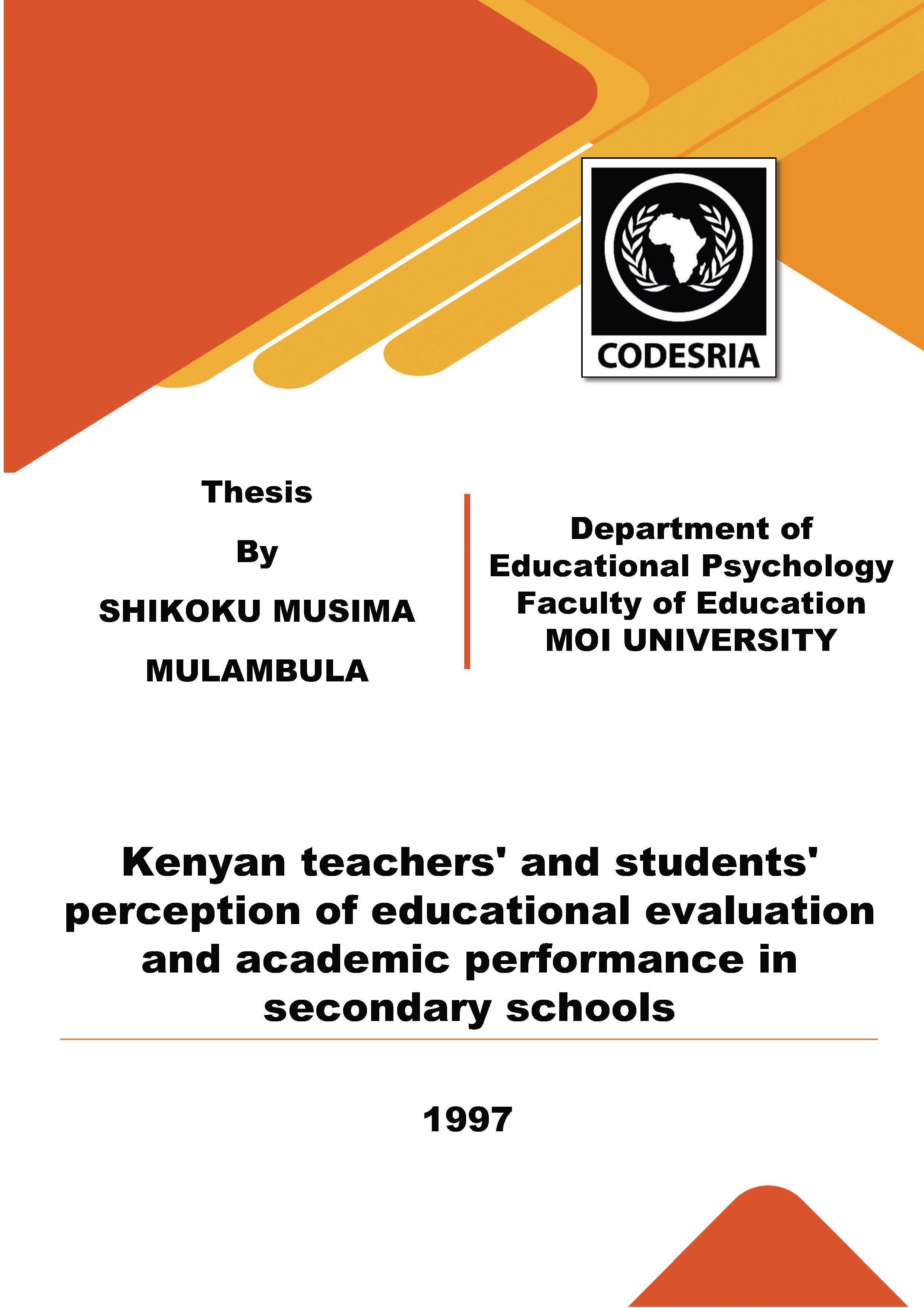Kenyan teachers' and students' perception of educational evaluation and academic performance in secondary schools
Keywords:
Kenyan teachers, Students, educational evaluation, secondary schoolsSynopsis
The purpose of the study was to investigate the nature of students' and teachers' locus of control, perception of school environment and perception of evaluation based on the tetrahedral pyramidal model (4-PM), and whether these factors are influenced by gender, type of schools, age and level of education among students; and by gender, level of training and teaching experience among teachers. The research also probed the relationship between perception of evaluation and academic performance and whether the relationship is influenced by type of school, gender, age and level of education among students.
The research was carried out in Kakamega district of Western Province of Kenya using 206 Form Two and 168 Form Four students. A total of 40 teachers also participated in the research as subjects. The data was collected using questionnaires and analyzed using percent age, mean, standard deviation, ANOVA, t-test and correlation coefficient (s) statistics.
Data analysis revealed that the nature of the students' and Teachers' locus of control, perception of school environment and perception of evaluation were neutral. The relationship between perception of evaluation and academic performance significantly indicated that the evaluation schema among students in secondary schools was ambivalent and most of the students are experiencing an evaluational syndrome. This mode of schema implies that, there is confusion in schools about the importance of selfinitiative, environmental factors and evaluation system in education. This as well, means that the need satisfaction from the education system is low.
In view of the findings, it is recommended that all parties involved in education, particularly students, parents, teachers and educators should strive to achieve a positive schema that will realize high academic performance and increased need satisfaction. This can be achieved through propagating positive attitudes towards all the identifiable components in the 4-PM, since, according to the Gestalt Principles the whole is greater than the parts.
Downloads
References
Evans, Rand Seeman, T. information assimilation: locus of control and cognitive Activity (1962), In Journal of personality vol,41 (1), March 1973. Duke University Press.
Gore S. (1962) In Bordern, R, and Hendrick, C, InternalExternal Locus of Control and Self-Perception Theory. Journal of Personalitv March, 1973 vol. 41 l, Duke University Press.
Hogrebe, M.C. Student Perception as predictors of Academic Performance in College Development Studies. Journal of Educational and Psychological Measurement 1985 Vol. 45 3, P. 639-46.
Irungu, N. Apathy Grips Murang'a teachers, Daily Nation Newspaper February 27, 1991 P. 28, Col 3.4 and 5.
Johnson, R. T and Jones J. School certificate Results as Predictors of success at University and Education in Eastern Africa Vol.2 (2), 1971 PP.55-62.
Jones, J.G. and Grieneeks, L.(1970) Measurement of self perception as predictors of scholastic achievement. In Burns, R.B. Theory, Measurement Development andBehaviour. Longman, Inc New York,






